'Making Wireless Accessible to You' was the hearing aid compatibility (HAC) theme at the recent Self Help for Hard of Hearing (SHHH) convention in Omaha. The Hearing Industry Association (HIA) and the Alliance for Telecommunications Industry Solutions (ATIS)1 presented updates to the SHHH convention participants regarding compatibility between hearing aids and mobile phones.
Since 1995, the hearing aid industry has been collaborating with the mobile phone industry to develop standards which would allow hearing aids to work maximally with mobile phones2. The ANSI C63.19 standard3 was the culmination of six years work between the two industries. The standard set the immunity and emissions requirements and test protocols, which both devices must adhere to, in order to achieve compatibility.
The standard was built on two independent clinical studies,4 numerous verification and validation activities, was internationally reviewed by the European Hearing Industry Association (EHIMA) and approved via the rigorous ANSI standards development process.
During the development of the ANSI C63.19 standard, immunity and emission goals were set in place to reflect significant product improvements within the hearing aid and mobile phone industries. In 1996, a mobile phone representative created a graphical representation (figure 1) which expressed an ideal result: mobile phones would reduce emission levels to 10 volts/meter (V/m, a measure of radio frequency field strength) and hearing aid immunity would go up to 30 V/m. However....there were two points to be considered:
- Hearing aids were much worse than the 10 V/m indicated in figure 1.
- It would be impossible for phones to be reduced to 10 V/m while maintaining connections.
In July, 2003, the FCC re-opened hearings to address the mobile phone industries lack of improvement in phone emissions, thus revisiting the 1988 HAC act2,6. The FCC "rule and order" (R&O) key requirements indicated that a certain percentage of mobile phones in varying timeframes needed to meet certain emission levels. In addition to recognizing the validity of the ANSI C63.19 standard, the FCC specifically ordered the following:
- Within 2 years, every major handset manufacturer and service provider must offer at least two mobile telephones that reduce radio frequency (RF) interference to a specified level (M3) as defined by an ANSI standard for hearing aid compatibility (HAC).
- By 2006, phone manufacturers and carriers must offer at least two phones that can be used with hearing aid telecoils;
- By February 18, 2008, half of all mobile telephone handsets must have RF interference levels of M3 or less.
(Note - the above list is only a partial list of requirements from the FCC R&O.)
Therefore, if a hearing aid meets the M2 level and the mobile phone meets the M3 level, then the hearing aid user should experience "normal usage" while using their hearing aid with the particular mobile phone. "Normal usage" in this context is defined as a signal quality that is acceptable for normal operation. In a similar manner, the hearing aid and mobile phone were tested for T-coil quality too.
The FCC R&O mobile phone requirement , M3, is depicted in figure 6, which also indicates the hearing aid immunity level, M2, thereby overlapping the mobile phone requirement, re-emphasizing the duality of the standard.
Interestingly, increased attention from the FCC, and the general awareness by the public of these issues was noted in a 2003 prime time episode of CSI:Miami. In that episode, the assailant was apprehended, based in part, on the interference from the victim's mobile phone to the assailant's hearing aid (figure 7).
The FCC R&O has given hearing impaired people hope for improved and efficient mobility in the foreseeable future.
Conclusions:
The hearing aid industry has improved its product "immunity to interference" by more than 30dB. It is estimated that 60% of the hearing aids produced today meet the M2 rating. The hearing aid industry products available in 2004 meet the level of immunity required to assure compatibility with the FCC mobile phone product requirements targeted for 2008. The 2008 requirement states that 50% of mobile phones need to be M3 or greater.
HIA worked closely with the FCC and FDA to assure compatibility between hearing aids and mobile phones. The hearing aid industry is actively working with ATIS and is involved in the ANSI C63.19 continuation efforts as well as working on hearing aid labeling. Continued hearing aid industry involvement includes monitoring mobile phone directional antenna efforts, working with the mobile phone industry on ancillary T-coil mobile phone components, and working with EHIMA on potential European Union initiatives.
As mobile telephone and similar devices continue to evolve, hearing aid immunity to interference will remain a key industry objective.
--------------------
Tom Victorian, BSEE, is Vice-President of Engineering at Starkey Laboratories, Co-chair ANSI C63.19, and Chair of the HIA Technical Committee. The author can be contacted at 952/828-6930.
To visit the Starkey website, click here.
References
1 ATIS (2003). ATIS Incubator Solutions Program 4 Hearing Aid Compatibility Incubator, AISP.4-HAC, mhayes@atis.org. Washington D.C.
2 Victorian T, Preves D: Progress achieved in setting standards for hearing aid/digital cell phone compatibility. Hearing J 2004;57(9):25-29
3 ANSI (2001). Method of Measurement of Compatibility between Wireless Communication Devices and Hearing Aids, C63.19, American National Standards Institute.
4 Victorian T (1998). Update on digital cellular telephone interference and hearing aid compatibility. Hearing Journal, 51:53-60.
5 Delta (2003). Improvement in hearing aid immunity. Project No. A930005-1 performed by the Technical-Audiological Laboratory for EHIMA, 6-30-03, Odense, Denmark.
6 Federal Communications Commission (2003). FCC Acts to promote accessibility of digital wireless phones to individuals with hearing disabilities, NEWS, July 10 , 2003.
Figures
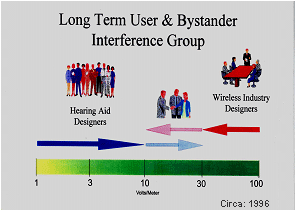
Figure 1. Graphical representation of hearing aid and mobile phone goals (1996).
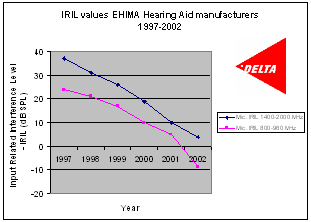
Figure 2. Improvement in hearing aid immunity over the past 5 years. Reprinted (by permission) from Delta (2003b).
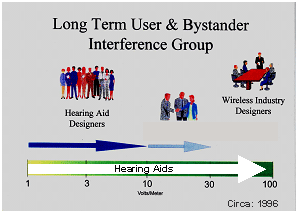
Figure 3. Graphical representation of hearing aid and mobile phone goals with hearing aid level of achievement.
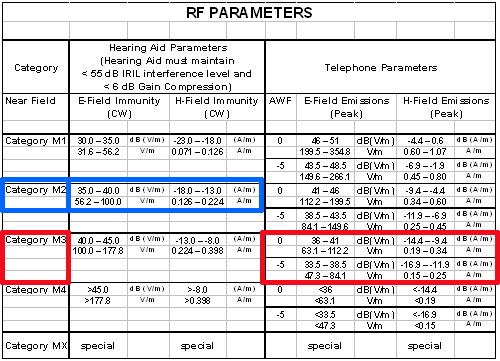
Figure 4. Categorization system for hearing aid immunity. Reprinted (by permission) from ANSI standard C63.19 (2001).

Figure 5. Categories of usability of hearing aids and cellular telephones. Reprinted (by permission) from ANSI standard C63.19 (2001).

Figure 6. Graphical representation of hearing aid and mobile phone goals highlighted with FCC rule and order M3 mobile phone requirement and HIA level of M2.
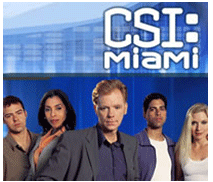
Figure 7. CSI:Miami

